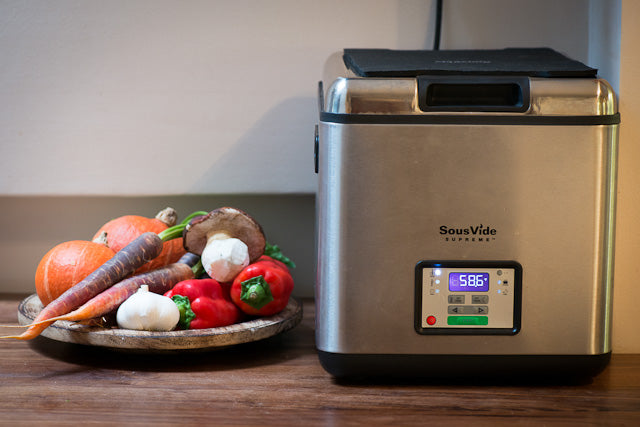Converting A Sous Vide Sceptic
-
November 1st, 2012

I grew up in a house with a temperamental aga. The kind where you lean your bottom against the oven door to guess the temperature, and estimate cooking times on whether your bottom cheek is scolding hot, or gently toasty.
It’s hard to change such deeply-ingrained habits. I went on to fail my chemistry GCSE – largely because my experiments mirrored the sort of cooking I’d grown up around. A dash of iodine, a sprinkle of magnesium powder and a hand hovered over the Bunsen burner to guess the temperature of the flame. I showed a far larger reliance on a supposed (and ultimately mistaken) ‘flair’ than on weighing scales, thermometers and dosing spatulas.
Needless to say, little has changed. I’m not big on following recipes. I still don’t know how to work my oven timer. And I’m far more likely to prod a sponge to check if it’s cooked than clinically insert a probe thermometer.
So when I encountered sous vide, I wasn’t immediately convinced. Sure, Heston predicted that the technique of sealing food in a vacuum bag and cooking it in a temperature-controlled water bath “has the potential to be the biggest change in domestic kitchens since the microwave”. But being the kind of Luddite who also thought that “the internet will never catch on”, I wasn’t going to roll over and agree.
There are lots of arguments for sous vide though. Accuracy, consistency, even cooking and fillet-textured brisket. So, all things considered, I was willing to give it a go.
The equipment
I used a sous vide supreme, which is one of the first sous vide machines designed for home use, rather than restaurants. It’s not the prettiest of machines – but as square, metallic boxes go, it wasn’t too offensive either.
The best part is the ‘control panel’ on the front. As someone who gets annoyed with over-complicated car dashboards, and confused by anything more hi-tech than a Nokia 5210, I was pleasantly surprised. There is one set of arrows pointing up and down for higher and lower water temperature. Another set of arrows points up and down for a longer or shorter cooking period. And apart from that, there’s a big ‘start’ button. Not so tricky after all.
The process
After preparing the food in the simplest way possible – brining the salmon, and rubbing the venison in a little oil – it’s simply put inside a vacuum bag. The mouth of the bag is placed in the mouth of an Anova Sous-Vide vacuum sealer, and the ‘vacuum seal’ button sucks out all of the air, and heat seals the bag to prevent any water getting inside once it's submerged.
Filling the Sous Vide machine from a hot tap means that it comes up to temperature quickly. If it’s too hot then a jug of cold water cools it quicker than the machine. Though the name ‘sous vide machine’ may sound intimidating, it really isn’t much trickier than running a bath. The panel on the front shows the water temperature creeping 0.5°C closer to the desired heat. A ping alerts you that it’s at the right temperature, and ready to go.
There are two extra apparatus that come with the Sous Vide Supreme – one grid which sits on the bottom of the water bath, to stop the food from coming into contact with the hotter base of the chamber, and cooking quicker than intended. The other apparatus is a toast-rack-like contraption which means that several salmon fillets or beef steaks can be slotted in vertically, to stop them piling on top of each other, and cooking unevenly.
After cooking, the bag should be removed from the water bath and cut open. If planning to make a jus, pour the juices into a jug and set aside.



